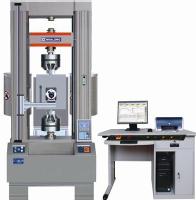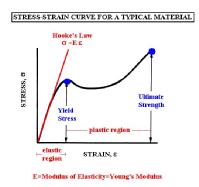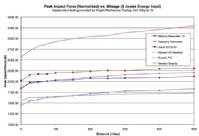Mechanical Testing
Mechanical testing reveals elastic and inelastic behavior of a material when force is applied. A mechanical test shows whether a materials or part is suitable for its intended mechanical applications by measuring elasticity, tensile strength, elongation, hardness, and fatigue limit.
 How does it work?
How does it work?
At its simplest, mechanical testing involves the application of strain to a material followed by the measurement of the subsequent induced stress. A number of different methods of applying the strain, including change the strain rate, direction, can be used to induce different stress regimes:
Hardness Testing is the measure of how resistant solid matter is to various kinds of permanent shape change when a force is applied.
Tensile Testing subjects a sample to uniaxial tension until it fails.
Torque Testing is the tendency of a force to rotate an object about an axis.
Fatigue Testing is performed on parts and materials to simulate the progressive and localized structural damage that occurs when a material is subjected to cyclic loading.
Charpy Testing: The Charpy impact test, also known as the Charpy v-notch test, is a standardized high strain-rate test which determines the amount of energy absorbed by a material during fracture.
Bend Testing determines the ductility or the strength of a material by bending the material over a given radius.
Proof Load Testing is often used interchangeably with yield strength; it refers to the tension-applied load that a test sample must support without evidence of deformation.
Shear Testing: Shear strength measures a material's response to shear load, a force that tends to produce a sliding failure on a material along a plane that is parallel to the direction of the force.
Applications:
Mechanical testing is widely applicable to materials which act in fastening and load-bearing roles, for example lock nuts
Collars, eddy nuts, bolts, bolts-recessed, wrenchable nuts, raw materials, welds, washers, assembled products, rivets, pins.
Sample handling requirements:
Sample must be in solid form and large enough to enable attachment of holding claws for insertion into rig
Complementary techniques:
Environmental Testing, Optical Microscopy, Scanning Electron Microscopy, X-Ray Diffraction, Thermal Analysis
Warwick Capability:
Various including Fatigue testing (ZwickLink opens in a new window +-250kN), High Strain Rate testing (InstronLink opens in a new window VHS 160/100-20), Drawing testing (ErichsenLink opens in a new window 145/60)
Contact:
Claire Gerard: c dot gerard at warwick dot ac dot uk / 07385 145064
Typical results format, and sample:
Status |
Availability |
 |
Warwick collect/analyse data |
 |
Warwick collect data |
 |
Available to user with expertise/ contribution |
 |
Spare capacity for collaborative research |
BOOK NOW |



